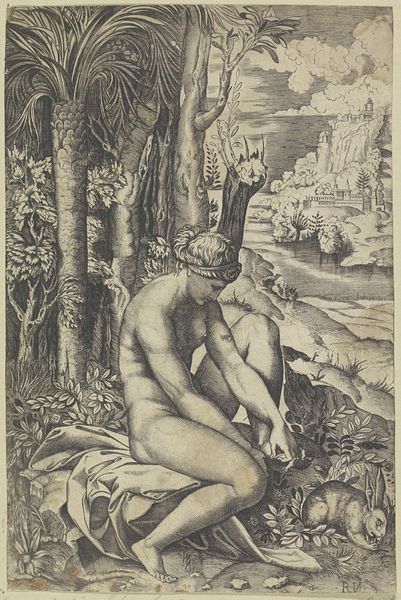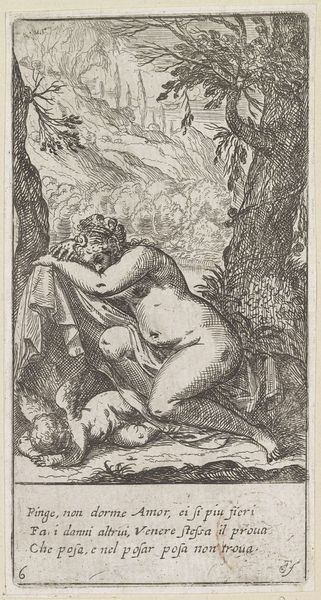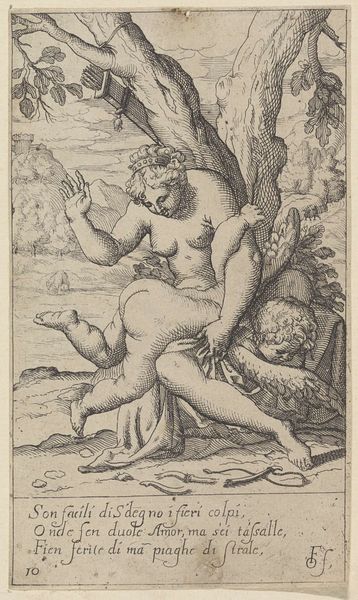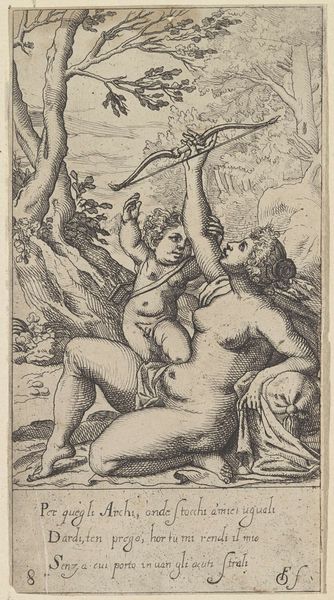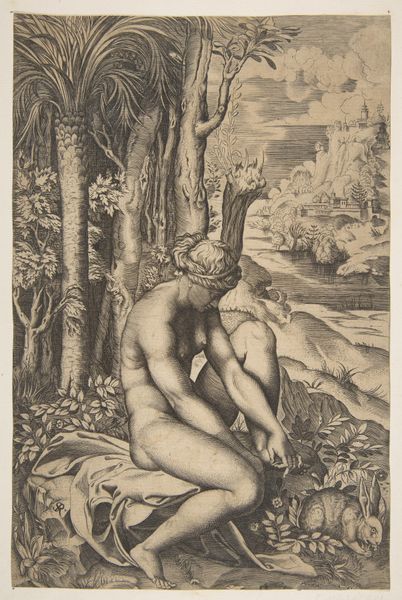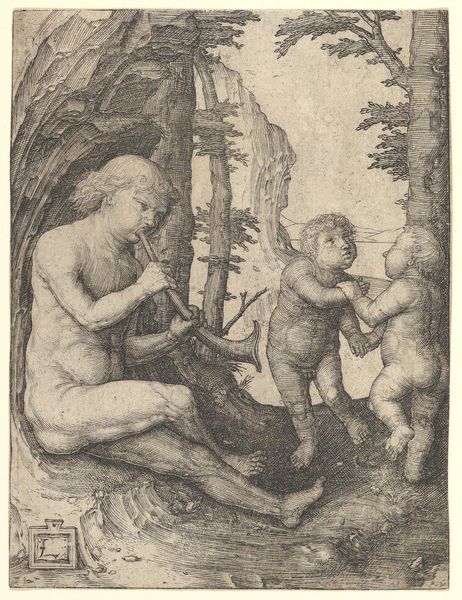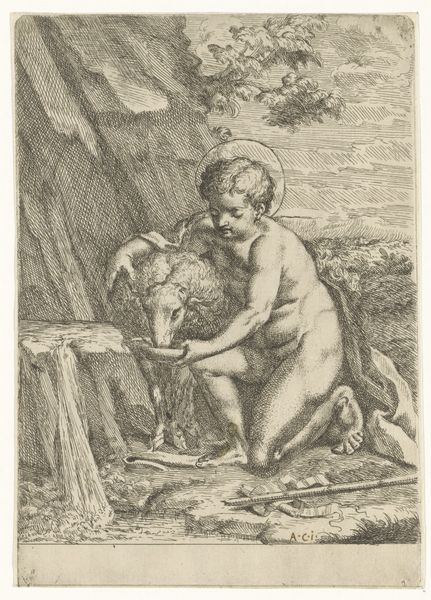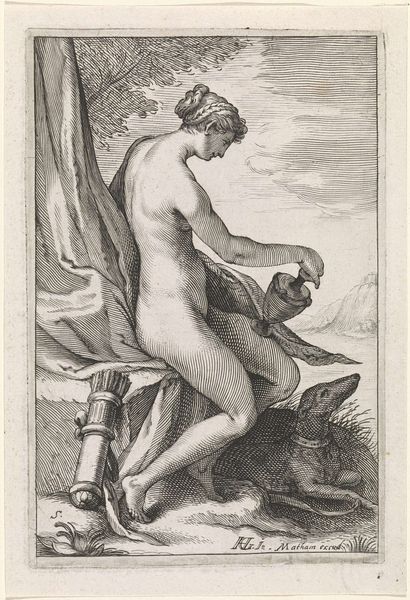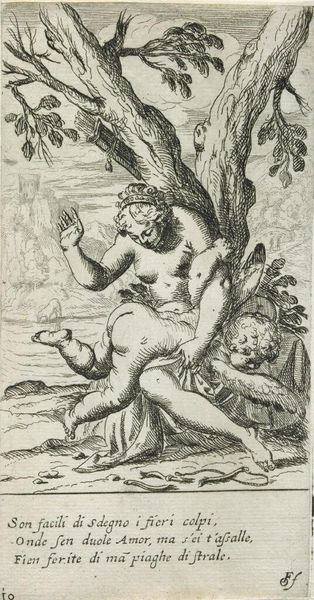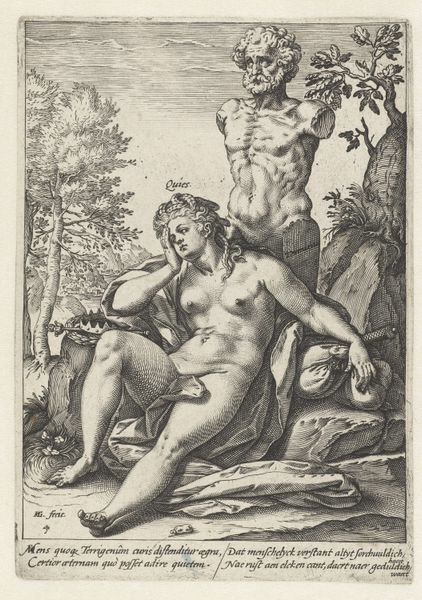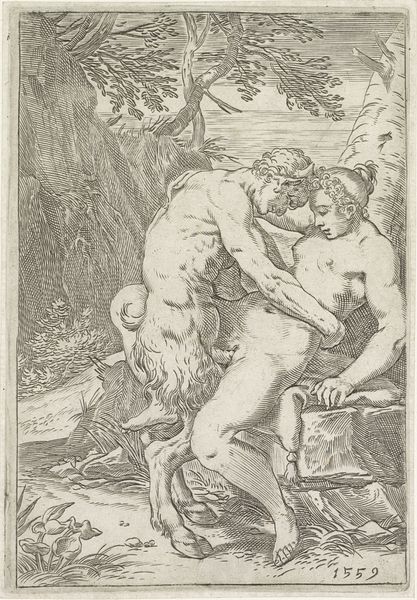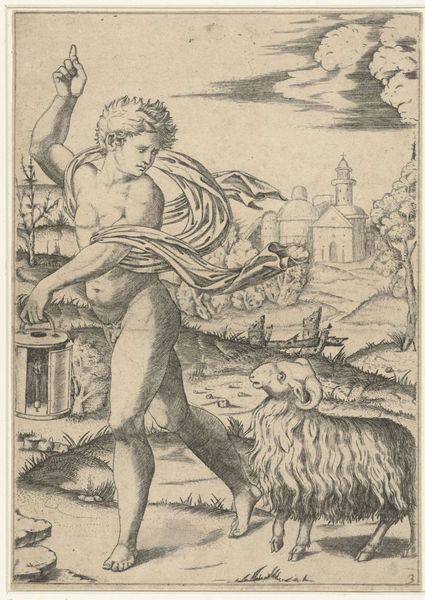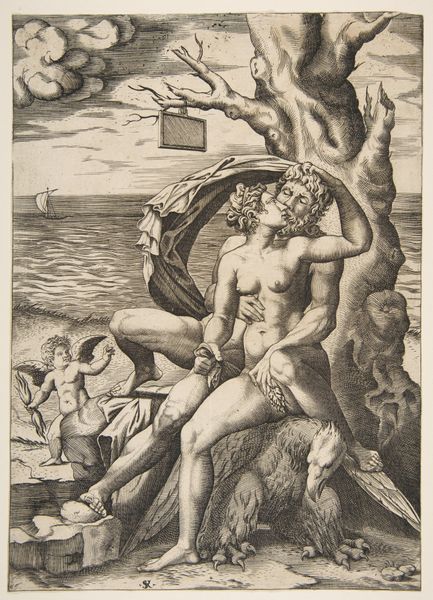
print, engraving
#
baroque
# print
#
landscape
#
figuration
#
engraving
Dimensions: height 178 mm, width 126 mm
Copyright: Rijks Museum: Open Domain
Curator: Today we're looking at a print called "Johannes de Doper in de woestijn," or "John the Baptist in the Wilderness" dating sometime between 1587 and 1647 and created by Everard Crynsz. van der Maes. Editor: Immediately striking, isn’t it? That intense hatching creating almost tactile textures, especially on the sheep. A real concentration of labour in that little patch. Curator: Indeed! It's a beautiful example of Baroque engraving. The details in the landscape are fascinating, and of course, the central figure of John the Baptist is quite compelling, particularly as he sits astride the lamb. Editor: Yes, there’s an interesting tension isn’t there – between the fineness of the lines and the sheer, frankly odd, composition! He really seems perched, precariously balanced! One does wonder about the practical process; the transfer of the drawing onto the plate must have been intricate, and the artist's hand… tireless! Curator: Perhaps Van der Maes aimed for that tension. John, as a figure between worlds, bridging the Old Testament and the New. Look at how the rough wilderness is contrasted by the small vessel he’s holding—almost an offering to the future? Editor: An interesting point. That small dish… it is the accoutrement of the metalworker and glassmaker: industries dependant on specific resources, found only in some regions of the country, requiring travel for artists like this, too. Were the print buying public aware of this toil and trade? Curator: Perhaps they sensed it. This wasn't just a pretty picture, but evidence of craft, industry. And what’s wilderness but nature to be managed and manipulated, just like these materials? Editor: Well put. Something humble about presenting this religious story through these processes; a democratizing gesture to the faithful beyond the metropolis. It has definitely offered another look at what’s materially significant here, even to me! Curator: Precisely. I feel drawn to reflect upon how such humble materials yield such profound meditations upon landscape, the body, and theology. A reminder that revelation can arise from unexpected places.
Comments
No comments
Be the first to comment and join the conversation on the ultimate creative platform.

